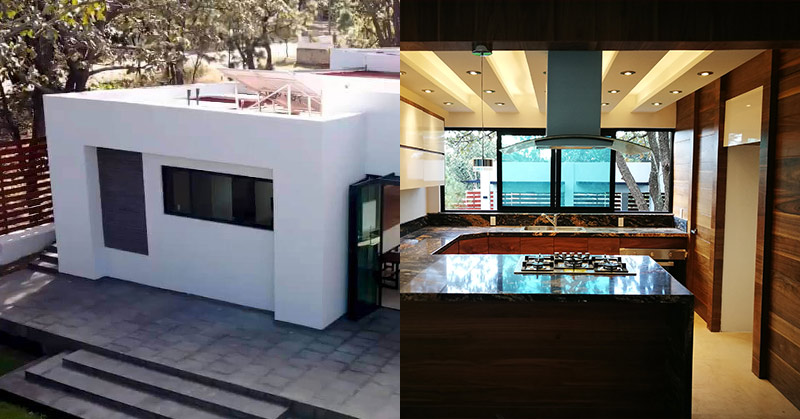According to reports from Intelligent Living, an electrical and mechanical engineer from Mexico, Ramón Martín Espinosa Solís, has developed a new building material called Eco Plastico Ambiental that allows the construction of homes resistant to seismic movements from the earth [1].
The future is now.

Earthquake resistant houses are not a new concept. Many construction companies specialize in using steel, wood, and unreinforced concrete to build structures in quake-prone areas. The major idea is to redistribute the force a building has to withstand during a seismic event. In earthquake-prone locations, the first safety precaution citizens are taught is to find a safe place away from walls and the direct fall of ceilings. If a building is not constructed to withstand the force of the earth during a quake, massive damage would be done when it falls on humans and property.
Solis, a graduate of the University of Guadalajara in Mexico designed a power, environmentally-friendly material made from recycled plastic (gotten from items such as baby bottles, shampoo containers, and industrial waste) that is highly resistant to seismic movements due to its flexibility. It can be used to build houses, classrooms, office buildings and cabins. The material meets all the standard regulations for normativity.
These houses would not only protect people from danger during earthquakes, but they would also help to reduce plastic waste and encourage recycling.

The house is self-cooling
Solis explained that the house does not require any air-conditioning since it’s designed in a way to permit maximum insulation from heat.
“In this house, there is no air conditioning, and the difference in temperature with the outside is around six degrees Celsius. This is due to the insulating materials that cause a slow heat transmission. In addition, the bioclimatic architectural design allows cross ventilation, so the heat that transmits the material from the outside to the inside is eradicated,” he said.
The house does not require maintenance and is also highly durable. While a traditional house can last up to 50 to 70 years, these homes have been estimated to have an average life of 100 years. They are resistant to wear from weather and climate conditions.

Production process
The eco-friendly material is produced in panels, with each panel measuring 20cm wide by 40 cm high with a thickness of 10 to 13 millimeters. Dozens of panels would be required to construct a house.
The first step is the collection of plastic waste, separation, and thorough cleaning. The materials are then ground into tiny bits and mixed with other components in the absence of moisture. When the mixture is as stiff as required, it is poured into a mold and heated at about 220oC (428oF). The panels are ready for use upon cooling.
The entire plastic transformation process is carried out using clean energy from the sun. The institution also explains that the house is environmentally conscious and does not host pathogens.
While it takes about four months to build a house using conventional building materials, a 50 square-meter house would be built in four weeks with this new material.
It also reduces costs by up to 50% since waste materials are recycled.
Sources
- Andrea Steffen. Mexican Engineer Builds ‘Plastic Houses’ Resistant To Earthquakes. Intelligent Living. https://www.intelligentliving.co/plastic-houses-resistant-earthquakes/.

